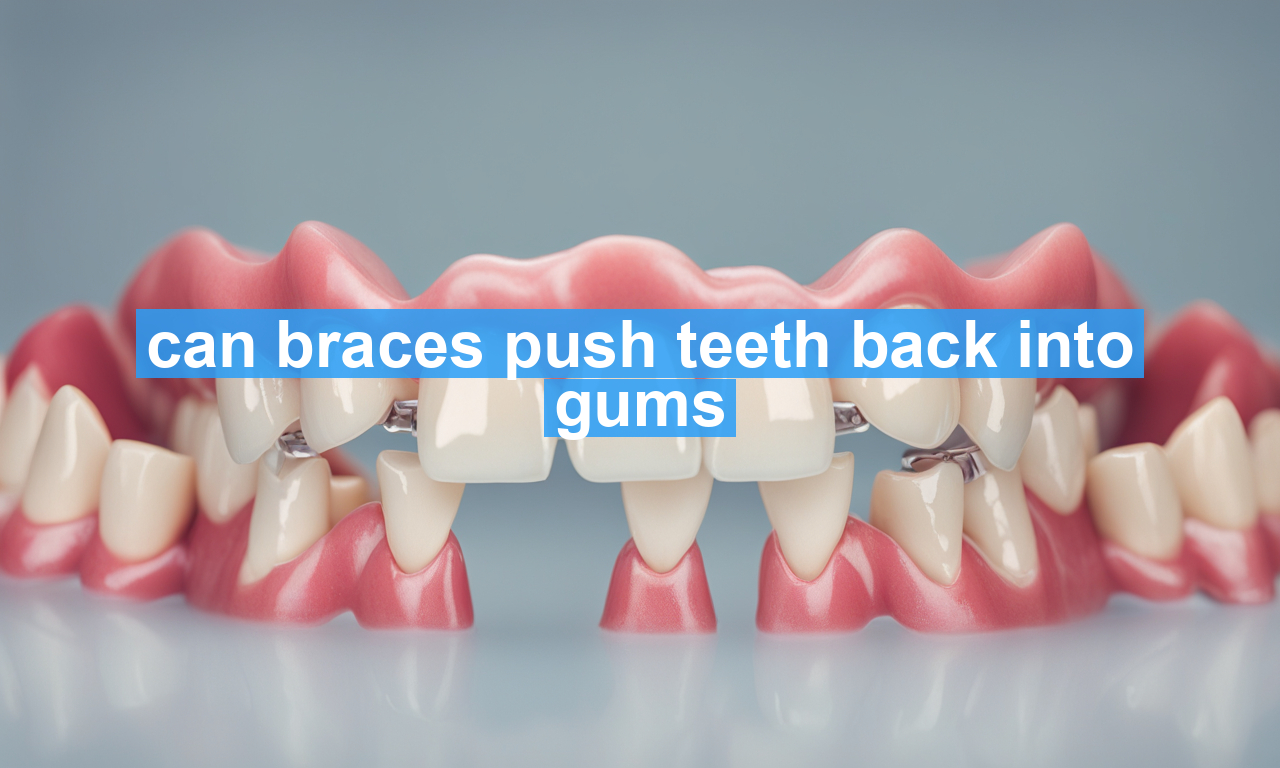Have you ever wondered about the magic behind orthodontic treatments, particularly when it comes to those pesky issues like overcrowded teeth or misalignment? You might be curious about whether braces can push teeth back into the gums. While the idea might sound alarming at first, orthodontics is indeed an incredible field that deals with gentle manipulation of teeth positioning to give you that beautiful, confident smile you deserve. In this article, we’re going to delve deep into how braces work, the biological process involved, and reassure you about the myths surrounding orthodontic treatments.
How Braces Really Work: The Science Behind It
Braces are a remarkable invention that combines art and science to align teeth and correct jaw positioning. At the heart of this process are three key components: brackets, archwires, and bands. The brackets, commonly made of metal or ceramic, are bonded to each tooth. The archwire, a thin metal wire, connects these brackets and applies steady, gentle pressure over time. This pressure is what eventually moves teeth into their desired positions.
It’s essential to understand that braces do not move teeth back into the gums; instead, they work within the constraints of our natural anatomy. When we discuss movement, we’re referring to the teeth moving through the bone via a process called bone remodeling. This biological process involves the breakdown of bone on one side of the tooth and the formation of new bone on the other side. It’s a slow, controlled process, ensuring that teeth are securely repositioned without causing distress to sockets or underlying gums.
Can Braces Cause Teeth to Move into the Gums?
The short answer is no, braces cannot push teeth back into the gums. This is a common misconception due to misinformation. Instead, braces are specifically designed to move teeth within the constraints of the jawbone safely. When orthodontic treatment is done properly by a certified professional, it ensures that the movement is biologically favorable and causes no harm to the gum or the jawbone.
Understanding Gum Recession and Its Causes
Gum recession often gets wrongly attributed to the use of braces. In reality, gum recession can result from various factors like:
- Poor oral hygiene: Neglecting your dental health might lead to tartar buildup, leading to periodontal disease that can cause the gums to recede.
- Aggressive brushing: While brushing is essential, doing so too vigorously can actually wear down gums over time.
- Genetic factors: Sometimes, it’s just a matter of genetics. Some people are more predisposed to gum recession than others.
When receiving orthodontic treatment, it’s crucial to maintain strict oral hygiene to prevent issues like gum recession. For more detailed insights, the Mayo Clinic offers extensive information on gum disease and its causes.
The Role of an Orthodontist
Orthodontists are the unsung heroes of the dental field. Their expertise lies in diagnosing, preventing, and treating dental and facial irregularities. When it comes to ensuring that teeth do not end up being pushed back into the gums, the skill and precision of the orthodontist are paramount. After all, not all treatment plans are made equal. A thorough assessment and a custom treatment plan are designed for each patient, considering factors like dental history, current dental structure, and long-term goals.
By working closely with an orthodontist, patients can set realistic expectations and gain a clear understanding of the timeline and recommended procedures. Consistent follow-up appointments are crucial, allowing the orthodontist to adjust braces as needed to optimize results.
The Importance of Follow-up Care
After the braces come off, the journey isn’t quite over yet. Retainers play a critical role in maintaining teeth position. Post-treatment care ensures teeth remain in their new position, preventing them from shifting back. Regular dental check-ups during and after the treatment phase are essential to maintain overall oral health and to catch any potential issues early.
Embracing Orthodontic Treatment with Confidence
If biting and chewing shifts or speech inconsistencies make you self-conscious, or if you’re simply seeking to enhance your smile, braces can be a fantastic solution. They are a secure and effective option for achieving a beautifully aligned smile. Concerns regarding teeth being pushed back into the gums are unsubstantiated when under a professional’s care. Always ensure that you have all the pertinent information at your fingertips and consult with a certified orthodontist to commence the journey toward your dream smile.
For further reading on orthodontic treatments and oral health, the WebMD has a comprehensive overview of what to expect with braces.
In conclusion, while it’s natural to have questions and concerns about orthodontic treatments, embracing them with accurate information and expert guidance can transform any apprehension into excitement for a brighter and healthier smile!

